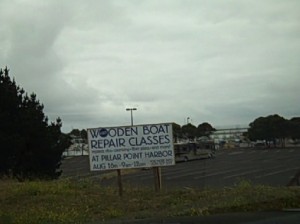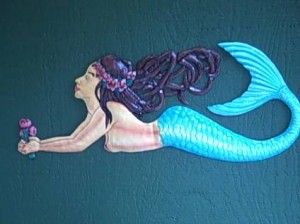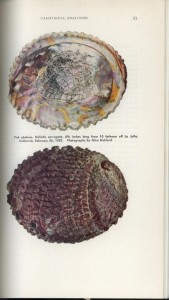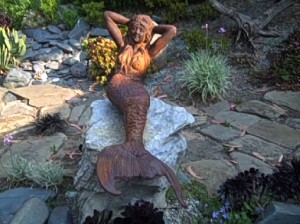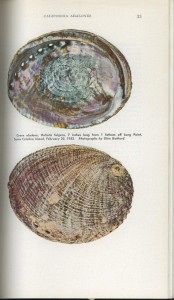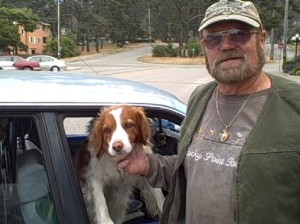Meta
Recent Comments
Categories
- "Big Daddy" Don Garlits (1)
- 1946 Tidal Wave (4)
- A.M. Patrick (2)
- abalone (1)
- Abalones (1)
- Able Body Pet Care (2)
- Andy Santana (1)
- Barbara's Fishtrap (1)
- Ben Bailey (1)
- boat building (1)
- Bobby Franko (1)
- Burt Blumert (1)
- Coastside development (1)
- Coastside Fishing Club (3)
- Coastsider.com (1)
- Collin Tiura (2)
- Crab Cottage (3)
- Crab Landing (1)
- Deb & Michael Wong (2)
- Dennis McShane (1)
- Elaine Martini Teixeira (1)
- Erich von Neff (2)
- Ernie Mangue (1)
- Extreme Kayaking (1)
- F.E. Booth Company (1)
- Fishermen (1)
- Fran "Buzz" Young (7)
- Frank Celestre (2)
- Friends of the Calamari (1)
- Galen Wolf (1)
- George Dunn (1)
- Golden Gate Abalone (1)
- Gray Gardner (1)
- Half Moon Bay Bakery (1)
- Half Moon Bay Brewing Co. (1)
- Harbor Village Books (1)
- Henry Bettencourt (1)
- Henry Cowell (1)
- Henry Doelger (1)
- Idas (1)
- Joanne Franklin (1)
- Joe Cordova (1)
- John Vonderlin (3)
- Katherine Middleton (1)
- Kelly Groves (1)
- Ketch Joanne (1)
- Larry & Jim Fortado (1)
- Leland & Cecily Parsons (1)
- Lorraine Piegaia (1)
- Mark Andermahr (1)
- Mavericks (2)
- MD (1)
- Mezz Luna (1)
- Mich (1)
- Michael Bowen (1)
- Michael Koepf (2)
- Michael Powers (1)
- Miramar Beach (1)
- Miramar Hotel (1)
- Mystery of Half Moon Bay Documentary (1)
- Nerli's (1)
- Oceano Hotel & Spa (2)
- Pete Forchini (1)
- Pillar Point (10)
- Pillar Point Breakwater (8)
- Princeton Packers (3)
- Princeton-by-the- (1)
- Princeton-by-the-Sea (22)
- Princeton-by-the-Sea characters (2)
- Red Abalone (1)
- Richard Henry (1)
- Rob Tillitz (3)
- Robbie Bergerson (1)
- Robert L. Wiegel Coastal Slide Collection (1)
- Rydal Hall (1)
- San Mateo County History Museum (1)
- San Mateo County Supervisor Rich Gordon (1)
- South City Blues Band (1)
- Spring Mountain Gallery (1)
- Sr. (1)
- Stacy Trevenon (1)
- Steve Carusa (1)
- Susan Pate (1)
- the book (1)
- The Daisy (1)
- The Fisherman's Son (1)
- The Irene (3)
- Tom Monaghan (1)
- Transitions (1)
- Uncategorized (278)
- Vincent Carusa (1)
- William M. Wilson (1)
Want to build a wooden boat?
Posted in Uncategorized
Comments Off on Want to build a wooden boat?
Virtual Pillar Point
Posted in Uncategorized
Comments Off on Virtual Pillar Point
Meet the Pink Abalone
A Pink Abalone!
Distinguishing Characers: Shell thick, circular and highly arched. Surface roughened with wavy corrugations (hence the name corrugata). Two to four large open holes bordered by sharply elevated rims, which may be worn flush with shell in some individuals. Edge of shell is usually sharply scalloped.
Exterior of shell dull green to reddish brown, surface usually covered by heavy vegetation and other marine growth.
Interior brillantly iridescent, nacreous portion predominantly pink with traces of green. Large muscle scar with prominent dark green markings. Grows to 10 inches in diametere but most are six to seven. Young specimens are quite flat until they reach three to four inches when shell begins to arch.
This species offers a variety of shell forms making identification by shell characteristics alone sometimes difficult. The epipodium extending below the edge of the shell is roughened, its upper edge delicately lacelike in structure, is mottled black and white. The long, slender, black tentacles extend beyond the edge of the shell and the body is blackish.
Distribution: Pt. Conception south to Turtle Bay, Baja Califoria. They are abundant on Santa Barbara and San Clemente Islands and have been found on all of the Channel Islands. Individuals of this species have been recovered from Cortez Bank and are also found at Guadalupe Island, Baja California.
Habitate: Along the rocky shores from the intertidal area out to 180 feet of water with major quantities located in the 20-to-80 foot depths. They are found in the more protected coves and bays as well as along the exposed coast in the active surf. They feed on giant kelp (Macrocystis) but will also eat other species of seaweed.
The young remain under rocks and in cracks and crevices until attaining a size of three and one-half to four inches. They then move out and take up residence on the exposed surfaces of the rocks and cliffsides of the ocean bottom. Tagging experiments indicate that there is little movement. Tagged abalones have been recovered in the same general area in which they were released as much as three years later.
From: California Abalones, Family Haliotidae (Dept of Fish and Game, 1962) by Keith W. Cox
Is this for real? How to Lasso A Crab
Found on my doorstep
Salty Tips
By Steve ‘Hippo’ Lau
How To Lasso A Crab
Three decades or so ago I was chucking chunks of anchovy off of Baker Beach in hopes of catching a striper or two. After a few minutes of soaking my offering in the surf, I started to get some action on my rod tip. There was a distinct “tap-tap-tap” of something showing interest in my bait. Carefully, I plucked the rod out of the sand spike–waited a few anxious breaths–then set the hook.
NOTHING!
Reeling in my rig, I found the bottom hook of the two hook rig, stripped of its contents. How could something that bit so positively escape my lazer sharp hook and devastating hook set?
Rebaiting the bottom hook, I cast out again and decided that I wouldn’t set the hoook until whatever was harassing my bait swallowed it and put a definite bend in the rod.
With my rig back into the surf, I waited. A few minutes later, the tell tale signs of life came back to my rod tip. My mystery customer bit and bit and bit until its weight fully flexed the tip of my rod. I cranked down with the reel and kept reeling as the living weigh of whatever was on my line kept the rod bent.
As the wave receded, I finally got a good look at my quarry It was a big fat Dungeness crab! Surprisingly, it was not hooked, but in the midst of eating my bait, with the water swirling around him, my leader had tangled up around his many legs and claws when I dragged him in. I had, in effect, lassoed a crab!
Now, in the subsequent yers, I have not been able to duplicate this feat of having my leader lasso an unsuspecting Dungie, but someone has made it his practice to lasso crabs, and his name is Joe Eichensehr.
Joe is responsible for developing the first castable crab snare, and holds the patent on it to prove it. The crab snare is basically a ware cage measuring 4.5″ L x 2″W x 1.25″D with six loops dangling from it. Bait (Joe’s favorite is squid) is inserted into the cage, the cage is cast out, and a hungry crab comes running to eat its contents. When it is suspected that a crab is availing itself to your bait, a quick cranking of your
….more coming…
Posted in Uncategorized
Comments Off on Is this for real? How to Lasso A Crab
Meet the Green Abalone:The Most Beautiful of them all?
Distinguishing Characters: Shell is oval, fairly thick, reaching 10 inches in greatest diameter but most individuals between five and eight. Outer surface an olive green to reddish brown color, regular in form and sculpture, with numerous, broad, flat-topped ribs separated by narrow, straightsided grooves. The holes are small, circular, only slightly elevated (may be worn flush with shell in larger individuals) and five to seven are open. The shell may be covered by marine growths.
The interior is brilliantly iridescent with predominant shades of dark green and blue. The muscle scar is vivid and striking in appearance. The interior is considered by many to be among the most beautiful of all abalones.
The epipodium is an olive green with patches of brown. It is scalloped along the edge and small protuberances give it a rough, frilled surface. The tentacles are greyish green and somewhat short and thick and project from under the shell a short distance. This species shows considerable variation and H. splendens Reev, H. revea Bartsch, and H. turveri are synonyms.
Distribution: Although reported from the Farallon Islands and from Monterey it is doubtful that the species is found so far north. Its northern range appears to be Pt. Conception and it extends south to Magdalena Bay, Baja California. This or a subspecies also is found at Guadalupe Island, Baja Califoria. Records from the Gulf of California are based upon dead shells, probably carried there by travelers.
Habitat: This is a shallow water abalone inhabiting the rocky areas from about low tide out to 25 feet; occasional individuals ar taken at from 50 to 60 feet but the great majority are located in 10-to20-foot depths.
From California Abalones, Family Haliotidae, By Keith Cox, Dept of Fish and Game, 1962
Posted in Uncategorized
Comments Off on Meet the Green Abalone:The Most Beautiful of them all?
Meet Frank Celestre of Able Body Pet Care
and find out why his friends used to call him “Deep,” and why they now call him “Shallow.”
[vimeo]http://vimeo.com/1238200[/vimeo]

Posted in Able Body Pet Care, Frank Celestre, Princeton-by-the-Sea
Tagged Able Body Pet Care, Frank Celestre
Comments Off on Meet Frank Celestre of Able Body Pet Care
Frank Celestre Takes Amy, Matzo, Jasmine & Rocky for a Hike
See the video: Meet Frank and the adorable dogs; you can’t see him, but that’s Rocky in the back window. [vimeo]http://vimeo.com/1238182[/vimeo]
Frank’s business is:
Posted in Able Body Pet Care, Frank Celestre, Princeton-by-the-Sea
Tagged Able Body Pet Care, Frank Celestre
Comments Off on Frank Celestre Takes Amy, Matzo, Jasmine & Rocky for a Hike

